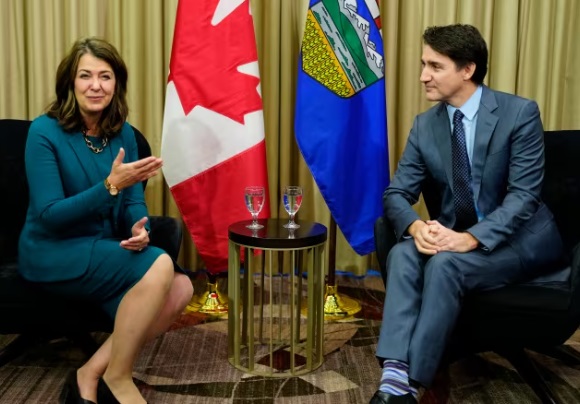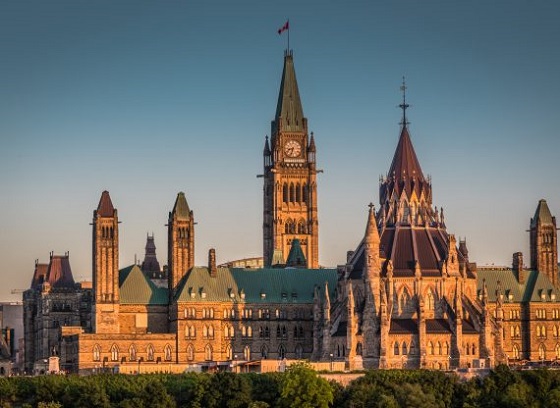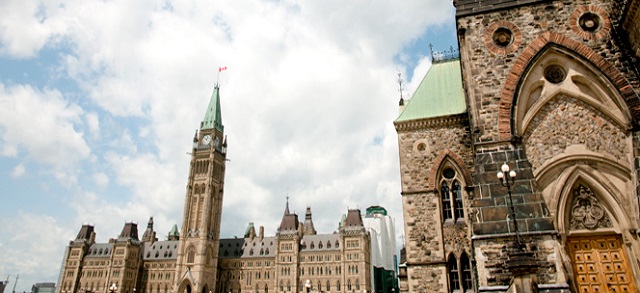Alberta
Province has three scenarios for return to school in September. Final decision by August 1. Details

From the Province of Alberta
Getting ready for 2020-21 school year
A comprehensive re-entry plan for the upcoming school year allows schools and parents to prepare for learning while putting student and staff safety first.
The plan offers guidance on a wide range of operational issues including hygiene and health requirements, student learning, transportation and diploma exams. It also addresses mental health and psychological supports for students and staff.
School authorities will plan for all three scenarios for September:
- In-school classes resume (near normal operations with health measures)
- In-school classes partially resume with additional health measures
- At home learning continues (in-school classes are cancelled)
The preferred and likely scenario is that students will return to daily in-school classes at the beginning of the year. The government will share its final decision by Aug. 1 on which scenario will be in place at the beginning of the school year. However, school authorities are asked to prepare for implementing any of the three possibilities during the upcoming school year, including on short notice.
“We are providing clear direction and the certainty parents and the school system need to plan ahead and get ready for what the new school year may look like. We are hoping, and it is likely, students can return to daily classes at school while taking health precautions, but we have to prepare for all possibilities. I want to thank our education leaders, teachers and parents for their thoughtful contributions to this comprehensive plan.”
“This plan puts the interests of students and staff first. Educators, administrators, families, health professionals and government all need to work together to support a safe return to in-person classes. We continue to monitor the situation closely. The reality is, we must weigh the risk of prolonged school closures against the risk of COVID-19 outbreaks in closed settings, such as schools. A safe and successful school year will only be possible if we all work together.”
The re-entry plan balances the need for provincial standardized approaches in some areas while also providing flexibility and recognition of school authorities’ autonomy to address health guidelines in the most effective ways in their own communities.
Alberta Education worked closely with many education partners on the plan, including the Alberta School Boards Association, the Alberta Teachers’ Association, the College of Alberta School Superintendents, the Association of Independent Schools and Colleges in Alberta, The Association of Alberta Public Charter Schools, individual school authorities and the Alberta School Councils’ Association which compiled input from more than 66,000 parents.
“The Alberta School Councils’ Association is pleased that considerations for the safety of students and staff remain priorities throughout this detailed plan, along with the recognition that school authorities are best suited to making operational decisions directly impacting their local school communities. We look forward to ongoing work and communications with the ministry, as this is key for successful implementation and return to school.”
“Alberta’s teachers are looking forward to supporting our students as we transition into the 2020-21 school year. As our recent survey indicates, teachers are concerned about the health and safety of themselves, their colleagues and their students. We expect to work with government to strengthen and improve the plans for re-entry to ensure that schools can provide healthy and safe environments for teachers and students.”
“Supporting the health and safety of students and staff continues to be a top priority for the ASBA and all school boards. We appreciate government providing clarity, while ensuring flexibility and autonomy, as each of Alberta’s public, Catholic and Francophone boards face challenges within the context of their local communities. As the situation evolves, we will continue to collaborate with government and our members to adjust the plan in preparation for the upcoming school year.”
“The College of Alberta School Superintendents joins the province in its commitment to protecting the health and well-being of all students and staff as we transition to the 2020-21 school year. We appreciate the collaborative manner in which the re-entry plan has developed and are pleased that school divisions have been provided with the flexibility and authority to implement procedures beyond the plan that they deem necessary to ensure the safety of their learning environments.”
“We are deeply appreciative of the ongoing consultation with all educational partners by the Minister of Education and the ministry as a whole in these trying circumstances. Teachers and systems have responded to the pandemic with remarkable energy and ingenuity. The proactive, engaging leadership of our government continues to be essential for education to fulfil its vital role in Alberta through this critical time.”
“Our association appreciates the government’s collaborative approach in developing this re-entry plan. We remain committed to supporting our schools so that their staff and students can experience a safe and positive learning environment in the coming academic year.”
Public health guidance for schools
Return to in-school class learning may vary across the province and is dependent on the number of COVID-19 cases in the local area. School boards should develop their own COVID-19 plans under the applicable scenario and health guidelines prior to reopening.
Measures to reduce the risk – scenario 1 (in-school classes resume – near normal operations with health measures)
Cleaning
- Enhanced cleaning and disinfecting, including daily cleaning for all areas of the school, washrooms and high-touch surfaces cleaned several times a day or more as needed.
- Regularly scheduled deep cleaning when students are not present.
Student/staff hygiene and illness
- Routine screening for all staff and students.
- Strict stay-at-home policy for any students or staff exhibiting symptoms of COVID-19.
- Hand hygiene expectations when entering and exiting the school and classrooms, before and after eating.
- Continual reminders of the importance of respiratory etiquette (e.g., cover coughs and sneezes, avoid touching the face and disposal of used tissues promptly, followed by hand hygiene).
- Students who develop symptoms at school may be asked to wear a mask and isolate in a separate room until a parent arrives for pickup. If a separate room is not available, the student must be kept at least two metres away from other individuals.
Physical distancing and grouping
- When possible, practise some physical distancing as a good precaution to prevent the spread of disease.
- In classrooms, buses and during activities when physical distancing may not be possible, extra emphasis is put on other hygiene practices.
- Reorganization of rooms to allow for more physical space.
- Cohorting of students by class where possible.
- Guiding foot traffic flow through entrances and hallways by using markers on the floor or pylons/barriers.
- Avoiding large gatherings such as assemblies.
Masks
- Staff and students will not be mandated to wear masks.
- Masks may be considered in circumstances where there is prolonged close contact (greater than 15 minutes) and distance of two metres cannot be maintained.
- Masking is generally not recommended for younger students.
Shared items
- A no-sharing policy – all students should have their own supplies.
- Where sharing of equipment is required, the equipment should be cleaned between uses.
Cases of COVID-19 in a school
- The zone medical officer of health will work with school authorities on the rapid identification of cases through easily accessible testing, rapid close contact identification, and isolation measures when needed.
- The zone medical officer of health will also work with school authorities to provide follow-up recommendations and messaging for staff, parents and students.
- Alberta Health Services may request the school to close in-person classes to allow the public health investigation to take place.
- Each school authority will support students and staff to learn or work at home if they are required to self-isolate.
Measures to reduce the risk – scenario 2 (in-school classes partially resume with additional health measures)
The same considerations as scenario 1, with the following differences:
- A recommended maximum of 15 people in a classroom to allow for more consistent physical distancing.
- Students will attend school less regularly as school authorities will need to adjust their class schedule and configuration to meet the physical distancing requirement.
Non-COVID-19 operational highlights
- Any summer programming will follow scenario 2 of the re-entry plan and the associated public health measures.
- August diploma exams will proceed for students taking diploma courses this summer.
- For the 2020-21 school year, diploma exams will be held if the first or second scenarios are in place. In scenario 3, exams may be cancelled.
- Provincial achievement tests (PATs) for Grades 6 and 9 can be held in the first and second scenarios, but will be optional for school authorities to participate.
- If scenario 3 is in place at the beginning of the school year, the January PATs will be cancelled. May/June PATs may be cancelled based on the duration of at-home learning.
- School authorities can, as deemed appropriate at the local level, reduce time spent teaching non-core subjects to allow for additional instruction time on core subjects.
- School authorities must enable the full participation and inclusion of students with disabilities under each scenario and address any learning gaps from the 2019-20 school year.
- Mental health supports should be in place for students and staff.
This plan is part Alberta’s Relaunch Strategy to safely begin removing public health restrictions and reopen our economy. For more information, visit alberta.ca/RelaunchStrategy.
Alberta
Danielle Smith warns arsonists who start wildfires in Alberta that they will be held accountable

From LifeSiteNews
The Alberta government has created an ad campaign highlighting the fact that most fires are caused by humans and not ‘climate change,’ as many left-leaning politicians claim.
In preparation for the so-called wildfire “season,” Alberta Premier Danielle Smith sternly warned anyone caught starting blazes in her province, including arsonists, that they will face charges and be held fully “liable” for all costs associated with the fires.
“As we approach the wildfire season, it is important to understand that 67% of wildfires in Alberta are started by people,” Smith posted Monday on X.
“If you start a wildfire, you can be charged, fined, and held liable for all costs associated with fighting the wildfire.”
Smith made the comments after last year revealing that most of the wildfires in her province (500 of the 650) were caused by humans and not “climate change,” as has been pushed by the legacy media and opposition politicians.
“All I know is in my province we have 650 fires and 500 of them were human caused,” she said, “so we have to make sure that when people know that when it’s dry out there and we get into forest fire season that they’re being a lot more careful because anytime you end up with an ignition that happens it can have devastating consequences.”
To go along with Smith’s Monday message, the Alberta government has also created an ad campaign highlighting the fact that most fires are caused by humans and not “climate change,” as many left-leaning politicians claim.
As reported by LifeSiteNews last year, Smith ordered arson investigators to look into why some of the wildfires that raged across the vast expanse of the province had “no known cause” shortly after they spread.
During the campaign of Alberta’s 2023 election, Smith, whose United Conservative Party won a majority government, had to pause to deal with many wildfires that suddenly, out of nowhere, ravaged the province. The fires came on suddenly and uncharacteristically considering the heavy snowfall in the province in early March and rain in April.
LifeSiteNews reported that despite the arrest of multiple arsonists, Canada’s mainstream media and the federal government have been pushing a narrative attributing the recent wildfires to “climate change.”
Indeed, in January, LifeSiteNews reported that a man from Quebec admitted to starting 14 forest fires himself. This put a chill to the legacy media’s push that the fires in the province were caused by “climate change.”
However, statistics from Canada’s National Fire Database show that wildfires have gone down in recent years and peaked in 1989.
As for Canadian Prime Minister Justin Trudeau, he has repeatedly used “climate change” and forest fires as a catalyst for propping up his government’s much-maligned carbon tax, which Smith opposes. He has blamed the fires on “climate change.”
A June 2017 peer-reviewed study by two scientists and a veteran statistician confirmed that most of the recent global warming data have been “fabricated by climate scientists to make it look more frightening.”
Trudeau has been calling for increased bans on Canada’s natural resources, of which Alberta has in abundance.
Smith has vowed to fight Trudeau on his attacks against Alberta’s oil and gas industry.
The reduction and eventual elimination of so-called “fossil fuels” and a transition to unreliable “green” energy has also been pushed by the World Economic Forum (WEF), the globalist group behind the socialist “Great Reset” agenda in which Trudeau and some of his cabinet are involved.
Alberta
Free Alberta Strategy backing Smith’s Provincial Priorities Act

News release from Free Alberta Strategy
Premier Danielle Smith had a message for Ottawa last week.
Keep out.
On Wednesday, the Premier rolled out her latest weapon in the fight against federal intrusions into provincial jurisdiction.
If passed, Bill 18 – the Provincial Priorities Act – aims to align federal funding with provincial priorities, ensuring that said funding reflects Alberta’s interests.
The legislation stipulates that any agreements between the federal government and any provincial entities – including municipalities – must receive provincial approval to be considered valid.
Smith has already given it a nickname: “the stay-out-of-my-backyard bill.”
It’s an apt description of the legislation, especially considering that’s what the federal government has been doing for years – encroaching into Alberta’s jurisdiction.
The legislation shouldn’t come as a surprise to anyone.
We all know that most deals the Alberta government enters into with the federal government don’t work out for Albertans.
We end up paying more in federal taxes than gets spent in federal spending on the programs.
The programs come laden with restrictive conditions that undermine our autonomy, and are often detrimental to our ability to provide the services.
This is especially true with regard to the recent agreement between Ottawa and the provinces that allows the federal government to nationalize childcare.
The childcare agreement has come under heavy criticism due to funding shortfalls in the deal.
It also applies to housing, where despite Alberta accounting for 12% of the national population and experiencing the most rapid population growth, it received a mere 2.5% of the total $1.5 billion in federal housing funding last summer.
Jason Nixon, Minister of Seniors, Community and Social Services, is in charge of housing in Alberta – which is provincial jurisdiction.
On the latest rollout of conditional federal housing handouts, Nixon isn’t buying.
“We will not be bribed, with our own money, to increase the time it takes to get homes built with green energy that makes homes more expensive.”
The theory also applies to the federal government’s latest gambit – doing an end-around provincial negotiations and going directly to municipalities, who seem more interested in taking the money than the conditions attached.
Municipalities are provincial jurisdiction.
Bill 18 mandates that entities within Alberta’s jurisdiction, such as municipalities, universities, school boards, housing agencies, and health authorities, must seek the province’s approval before engaging in, modifying, extending, or renewing agreements with Ottawa.
Agreements between the federal government and provincial entities lacking Alberta’s endorsement will be deemed illegal under this legislation.
That’s Premier Smith’s message.
She’s had enough of it.
“It is not unreasonable for Alberta to demand fairness from Ottawa. They have shown time and again that they will put ideology before practicality, which hurts Alberta families and our economy. We are not going to apologize for continuing to stand up for Albertans so we get the best deal possible.
“Since Ottawa refuses to acknowledge the negative impacts of its overreach, even after losing battles at the Federal and Supreme Courts, we are putting in additional measures to protect our provincial jurisdiction to ensure our province receives our fair share of federal tax dollars and that those dollars are spent on the priorities of Albertans.”
Municipal Affairs Minister Ric McIver had additional thoughts:
“For years, the federal government has been imposing its agenda on Alberta taxpayers through direct funding agreements with cities and other provincial organizations. Not only does Alberta not receive its per capita share of federal taxpayer dollars, the money we do receive is often directed towards initiatives that don’t align with Albertan’s priorities.
“Albertans from all corners of the province expect our federal share of taxes for roads, infrastructure, housing and other priorities – not federal government political pet projects and programs in select communities.”
The Provincial Priorities Act is based on existing provincial legislation in Quebec – called “An Act Respecting the Ministère du Conseil executif” – which prohibits any municipal body from entering into or negotiating an agreement with the federal government or its agencies without express authorization from the Quebec government.
That’s right – the Quebec government has the same rule!
So, this boils down to the same argument we’ve been making for years – if Ottawa wants to step into our backyard, it must first seek Alberta’s approval.
Enough is enough – we won’t stand idly by as our interests are trampled upon.
It’s time for Ottawa to recognize Alberta’s autonomy and respect our right to determine our own future.
At the Free Alberta Strategy, we know that constant vigilance is necessary – for every fence we put up, the federal government tries to find a way around it.
We’ll continue to bring you information about what’s happening in Alberta’s backyard and fighting to keep Ottawa out.
The Free Alberta Strategy Team
-

 International2 days ago
International2 days ago28-year-old Dutch woman to be killed by assisted suicide after doctors deem her autism ‘untreatable’
-

 Economy2 days ago
Economy2 days agoFederal budget: You can’t solve a productivity emergency with tax hikes
-

 Jordan Peterson17 hours ago
Jordan Peterson17 hours agoJordan Peterson slams CBC for only interviewing pro-LGBT doctors about UK report on child ‘sex changes’
-

 Economy1 day ago
Economy1 day agoMassive deficits send debt interest charges soaring
-

 Automotive2 days ago
Automotive2 days agoBiden’s Kill Switch: The Growing Threat of Government Control of Your Car
-

 Addictions17 hours ago
Addictions17 hours agoLiberal MP blasts Trudeau-backed ‘safe supply’ drug programs, linking them to ‘chaos’ in cities
-

 International21 hours ago
International21 hours agoBrussels NatCon conference will continue freely after court overturns police barricade
-

 Business2 days ago
Business2 days agoUS firms like BlackRock are dropping their climate obsession while Europe ramps theirs up






